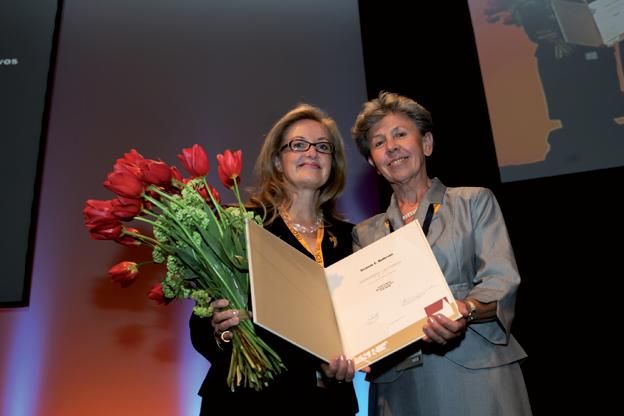Lecture highlights the human touch in musculoskeletal radiology
People, not images, were the stars of the show at the ECR 2010 Josef Lissner honorary lecture. Prof. Suzanne Anderson used her 30-minute timeslot to link inspirational teachers and mentors to the future of musculoskeletal radiology.
People, not images, were the stars of the show at the ECR 2010 Josef Lissner honorary lecture. Prof. Suzanne Anderson used her 30-minute timeslot to link inspirational teachers and mentors to the future of musculoskeletal radiology.
“In radiology, we are so focused on new technology that the human aspects are often underutilized,” she said. “If we can try to work together and use the human side of things, then perhaps we can help the next generation be more efficient, and also help patients in a more efficient and humane way.”

Anderson, chair of medical imaging at Sydney Medical School, University of Notre Dame in Sydney, Australia, explained how she had interviewed key players in MSK radiology while preparing her talk, asking them: Why did you do MSK? Who influenced that decision? All reacted in a similar way, she said, smiling as they recalled a special colleague and memorable moments.
“They had these micro ‘memory videos’ playing in their minds, and then after a few seconds they would grab my hand or shoulder and say: ‘Oh my goodness me, she was such a great person,’ or: ‘Oh you would have loved him, he was so much fun! I really enjoyed working with him,’” she said.
Others reacted in a slightly more measured way, praising their former mentors for their integrity and knowledge. All, however, had entered MSK radiology and continued for 20 to 40 years in that field because they had been influenced by just one or two people. This is an important take-home message, according to Anderson.
“Now the current generation, who are doing so much great work, are going to be influencing the next generation,” she said. “So if we can be a little bit more conscious of the effect that we have, this could be a very useful tool.”
Interest in MSK radiology is growing, ECR statistics demonstrate. Congress organizers now receive far more abstracts related to MSK imaging topics than any other discipline. Attendance at MSK refresher courses and scientific sessions at ECR has also doubled over the past few years.
So where should the next generation come from? The views of current opinion leaders were extremely similar, Anderson said. Most emphasized a need for prior clinical experience, ideally in orthopedics or sports medicine. Some expressed a preference for earlier subspecialization in MSK imaging.
While books and bones were previously the mainstay of MSK radiology education, the trend now is toward e-learning. Interactions between students and mentors should not be forgotten, though. Trainees need to be taught to question why an image looks the way it does and to appreciate the vast gray area of differential diagnoses, Anderson said.
“Clinical clerkship and apprenticeship remains one of the most important aspects of radiology education; we need people to learn and to learn clinically appropriately,” she said.
Images were not completely absent from the presentation. Delegates were given a whistle-stop tour of groundbreaking MSK work being conducted in European radiology departments. Examples included 7T MRI studies showing collagen and cartilage in exquisite detail, and diffusion tensor MRI tractography pinpointing the location of critical nerves. Advances in bioengineering were also highlighted, including strategies for reducing age-related muscle loss and a novel method of regrowing damaged knee ligaments from stem cells.
“Musculoskeletal radiology, our anatomy, hasn’t really changed for the past 2000 years. But what we do to our bodies has changed dramatically, and so has how we look at the body,” she said.
Note: a version of this article appeared in the 2010 ECR Today newspaper.
GE HealthCare Debuts AI-Powered Cardiac CT Device at ACC Conference
April 1st 2025Featuring enhanced low-dose image quality with motion-free images, the Revolution Vibe CT system reportedly facilitates improved diagnostic clarity for patients with conditions ranging from in-stent restenosis to atrial fibrillation.
The Reading Room Podcast: Current Perspectives on the Updated Appropriate Use Criteria for Brain PET
March 18th 2025In a new podcast, Satoshi Minoshima, M.D., Ph.D., and James Williams, Ph.D., share their insights on the recently updated appropriate use criteria for amyloid PET and tau PET in patients with mild cognitive impairment.